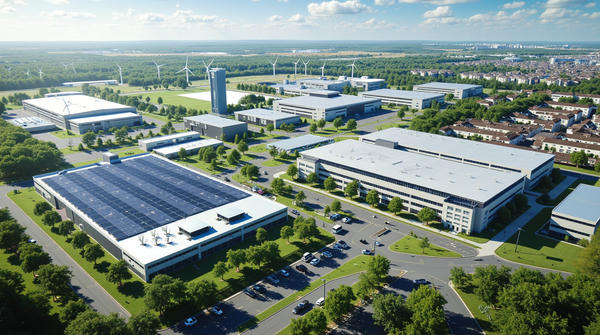When electric car batteries get a second life

Electric cars are booming and represent a major step forward in limiting CO2 emissions. But the question remains: what to do with batteries once they reach the end of their first life? Should they be considered bulky waste or a valuable resource to be reused? 🌍 This issue is at the heart of debates on the energy transition, and innovative solutions are emerging to give them a "second life".
A growing challenge with the rise of electric mobility
By 2030, it is estimated that around 12 million tonnes of electric car batteries will have reached the end of their useful life worldwide. These batteries, although less efficient for powering a car, still contain 70% to 80% of their initial capacity. Rather than throwing them away, why not exploit this potential?
The European Union, a pioneer in sustainable development, has taken up this issue. In 2020, over 1.4 million electric vehicles were registered on the continent. These figures are set to double in the next few years, making the management of used batteries more urgent than ever.
Innovative uses for a second life
So what can be done with these batteries? Several projects in Europe show that they can be reused in ingenious ways:
- Renewable energy storage: In the Netherlands, a large-scale project has transformed used batteries into storage systems for solar and wind farms. These batteries store surplus energy and redistribute it as needed, reducing energy losses. A great way to combine sustainability and innovation.
- Powering buildings: In Germany, some electric car batteries are used to power entire buildings. They are used to store electricity during off-peak periods and supply it during peak consumption periods. This system, tested in Hamburg, could become a model for other European cities. ⚡
- Urban infrastructure: In France, recycled batteries have been integrated into solar street lamps in rural areas. This economical and eco-responsible solution illuminates roads while reducing dependence on fossil fuels.
"Used batteries are not waste, but a tremendous opportunity to build a greener energy future. By reusing these resources, we are laying the foundations for a truly sustainable economy."
Here are a few innovative European companies in the field of second-life batteries:
- SNAM (France): European leader in battery recycling, SNAM has developed innovative processes for recovering materials and reusing batteries in stationary applications. snam.com
- BeePlanet Factory (Spain): This start-up specializes in transforming used batteries into energy storage systems for homes and businesses. beeplanetfactory.com
- Renault Group (France): Through its "Advanced Battery Storage" project, Renault is reusing batteries from its electric vehicles to create Europe's largest stationary electricity storage system. renaultgroup.com
- Duesenfeld (Germany): This company has developed a unique battery recycling process that recovers up to 91% of materials, while reducing CO2 emissions by 40% compared with traditional processes. duesenfeld.com
- Enel X (Italy): This Enel division develops energy storage solutions using recycled batteries for smart grids and renewable energies. enelx.com
A circular economy on the move
Reusing batteries is an integral part of the circular economy. It not only avoids waste, but also aims to reduce the extraction of raw materials such as lithium and cobalt, resources often associated with heavy environmental impacts.
What's more, this approach creates new economic opportunities. In Spain, a start-up specializing in battery reclamation has already collected over 15,000 units by 2023, generating local employment while participating in the energy transition. 💡
What next?
The second life of batteries is not a miracle solution, but it does meet an urgent need to reduce our ecological footprint while optimizing existing resources. What do you think? Do these initiatives seem sufficient to meet tomorrow's challenges? Share your ideas and thoughts: together, we can imagine a more sustainable future. 🌱



